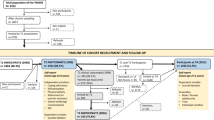We compared family risk and protective factors among potential high school dropouts with and without suicide-risk behaviors (SRB) and examined the extent to which these factors predict categories of SRB. Subjects were randomly selected from among potential dropouts in 14 high schools. Based upon suicide-risk status, 1,083 potential high school dropouts were defined as belonging to one of four groups; 573 non-suicide risk, 242 low suicide risk, 137 moderate suicide risk and 131 high suicide risk. Results showed significant group differences in all youth self-reported family risk and protective factors. Increased levels of suicide risk were associated with perceived conflict with parents, unmet family goals, and family depression; decreased levels of risk were associated with perceived parental involvement and family support for school. Perceived conflict with parents, family depression, family support satisfaction, and availability of family support for school were the strongest predictors of adolescent SRB. Our findings suggest that suicide vulnerable youth differ from their non-suicidal peers along the dimensions of family risk and protective factors.
Similar content being viewed by others
References
Allison, S., Pearce, C., Martin, G., Miller, K., & Long, R. (1995). Parental influence, pessimism and adolescent suicidality. Archives of Suicide Research, 1, 229–242.
Anderson, R. N. (2002). Deaths: Leading causes for 2000. National Vital Statistics Reports, 50(16). Hyattsville, MD: National Center for Health Statistics.
Breton, J. J., Tousignant, M., Bergeron, L., & Berthiaume, C. (2002). Informant-specific correlates of suicidal behavior in a community survey of 12- to 14-year olds. Journal of the American Academy of Child & Adolescent Psychiatry, 41, 723–730.
Dubow, E. F., Kausch, D. F., Blum, M. C., Reed, J., & Bush, E. (1989). Correlates of suicidal ideation and attempts in a community sample of junior high and high school students. Journal of Clinical Child Psychology, 18, 158–66.
Eccles, J., Early, D., Fraiser, K., Belansky, E., & McCarthy, K. (1997). The relation of connection, regulation, and support for autonomy to adolescents’ functioning. Journal of Adolescent Research, 12, 263–286.
Eggert, L. L., Herting, J. R., & Nicholas, L. J. (1994a). Prevention research program: Reconnecting at-risk youth. Issues in Mental Health Nursing, 15, 107–135.
Eggert, L. L., Herting, J. R., & Thompson, E. A. (1995). High School Questionnaire: Profile of experiences, University of Washington, Seattle, WA.
Eggert, L. L., Thompson, E. A., & Herting, J. R. (1994b). A measure of adolescent potential for suicide (MAPS): Development and preliminary findings. Suicide & Life Threatening Behavior, 24, 359–381.
Fergusson, D. M., Woodward, L. J., & Horwood, L .J. (2000). Risk factors and life processes associated with the onset of suicidal behaviour during adolescence and early adulthood. Psychological Medicine, 30, 23–39.
Garber, J., Little, S., Hilsman, R., & Weaver, K. R. (1998). Family predictors of suicidal symptoms in young adolescents. Journal of Adolescence, 21, 445–457.
Garrison, C. Z., Jackson, K. L., Addy, C. L., McKeown, R. E., & Waller, J. L. (1991). Suicidal behaviors in young adolescents. American Journal of Epidemiology, 133, 1005–1014.
Gould, M. S., Greenberg, T., Velting, D. M., & Shaffer, D. (2003). Youth suicide risk and preventive interventions: A review of the past 10 years. Journal of the American Academy of Child and Adolescent Psychiatry, 42, 386–405.
Greene, W. H. (1995). LIMDEP User's Manual (Version 7). Bellport, NY: Econometric Software.
Grohølt, B., Ekeberg, Ø., Wichstrøm, L., & Haldorsen, T. (2000). Young suicide attempters: A comparison between a clinical and an epidemiological sample. Journal of the American Academy of child and Adolescent Psychiatry, 39, 868–875.
Grunbaum, J. A., Kann, L., Kinchen, S., Ross, J., Hawkins, J., Lowry, R., Harris, W. A., McManus, T., Chyen, D., & Collins, J. (2004). Youth Risk Behavior Surveillance – United States, 2003 (Abridqed). Jaurnal of School Health, 74, 307--324.
Johnson, J. G., Cohen, P., Gould, M. S., Kasen, S., Brown, J., & Brook, J. S. (2002). Childhood adversities, interpersonal difficulties, and risk for suicide attempts during late adolescence and early adulthood. Archives of General Psychiatry, 59, 741–749.
Kienhorst, C. W. M., de Wilde, E. J., Diekstra, F. W., & Wolters, W. (1995). Adolescents’ image of their suicide attempt. Journal of the American Academy of Child and Adolescent Psychiatry, 34, 623–628.
Lewinsohn, P. M., Rohde, P., & Seeley, R. (1993). Psychosocial characteristics of adolescents with a history of suicide attempt. Journal of the American Academy of Child and Adolescent Psychiatry, 32, 60–68.
Lewinsohn, P. M., Rohde, P., & Seeley, R. (1994). Psychosocial risk factors for future adolescent suicide attempts. Journal of Consult & Clinical Psychology, 62, 297–305.
Martin, G., Rozanes, P., Pearce, C., & Allison, S. (1995). Adolescent suicide, depression and family dysfunction. Acta Psychiatrica Scandinavica, 92, 336–344.
McFarlane, A. H., Bellissimo, A., & Norman, G. R. (1995). The role of family and peers in social self-efficacy: Links to depression in adolescence. American Journal of Orthopsychiatry, 65, 402–410.
Perkins, D. F., & Hartless, G. (2002). An ecological risk-factor examination of suicide ideation and behavior of adolescents. Journal of Adolescent Research, 17, 3–26.
Randell, B. P., Eggert, L. L., & Pike, K. C. (2001). Immediate post intervention effects of two brief youth suicide prevention interventions. Suicide and Life-Threatening Behavior, 31, 41–61.
Resnick, M. D., Bearman, P. S., Blum, R. W., Bauman, K. E., Harris, K. M., Jones, J., et al. (1997). Protecting adolescents from harm: Findings from the national longitudinal study on adolescent health. Journal of the American Medical Association, 278, 823–865.
Rubenstein, J. L., Heeren, T., Housman, D., Rubin, C., & Stechler, G. (1989). Suicidal behavior in ``normal'' adolescents: Risk and protective factors. American Journal of Orthopsychiatry, 59, 59–71.
SPSS. (1998). SPSS for Windows Release 8.0. Chicago, IL: Author.
Thompson, E. A., & Eggert, L. L. (1999). Using the Suicide Risk Screen to identify suicidal adolescents among potential high school dropouts. Journal of the American Academy of Child & Adolescent Psychiatry, 38, 1506–1514.
Thompson, E. A., Eggert, L. L., & Herting, J. R. (2000). Mediating effects of an indicated prevention program for reducing youth depression and suicide risk behaviors. Suicide and Life-Threatening Behavior, 30, 252–271
Thompson, E. A., Eggert, L. L., Randell, B. P., & Pike, K. C. (2001). Evaluation of indicated suicide-risk prevention approaches for potential high school dropouts. American Journal of Public Health, 91, 742–752.
Thompson, E. A., Moody, K. A., & Eggert, L. L. (1994). Discriminating suicide ideation among high-risk youth. Journal of School Health, 64, 361–367.
Toumbourou, J. W., & Gregg, M. E. (2002). Impact of an empowerment-based parent education program on the reduction of youth suicide risk factors. Journal of Adolescent Health, 31, 277–285.
Wagner, B. M. (1997). Family risk factors for child and adolescent suicidal behavior. Psychological Bulletin, 121, 246–298.
Wagner, B. M., Cole, R. E., & Schwartzman, P. (1995). Psychosocial correlates of suicide attempts among junior and senior high school youth. Suicide and Life-Threatening Behavior ,25, 358– 372.
Wichstrøm, L. (2000). Predictors of adolescent suicide attempts: A nationally representative longitudinal study of Norwegian adolescents. Journal of the American Academy of Child & Adolescent Psychiatry, 39, 603–610.
Wichstrøm, L., & Rossow, I. (2002). Explaining the gender difference in self-reported suicide attempts: A nationally representative study of Norwegian adolescents. Suicide and Life-Threatening Behavior, 32, 101–116.
Yuen, N., Andrade, N., Nahulu, L., Makini, G., McDermott, J. F., Danko, G., et al. (1996). The rate and characteristics of suicide attempters in the native Hawaiian adolescent population. Suicide and Life-Threatening Behavior, 26, 27–36.
ACKNOWLEGMENTS
This research was supported by grants R01 NR 03548 and R01 NR 03550 from the National Institute on Nursing Research (L. L. Eggert, principal investigator). We are indebted to the high school personnel and the young people whose participation enhanced our understanding of factors contributing to and protecting against suicide risk behaviors and to the dedicated efforts of the clinical and research staff that comprise the Reconnecting Youth Prevention Research team.
Author information
Authors and Affiliations
Corresponding author
Rights and permissions
About this article
Cite this article
Randell, B.P., Wang, WL., Herting, J.R. et al. Family Factors Predicting Categories of Suicide Risk. J Child Fam Stud 15, 247–262 (2006). https://doi.org/10.1007/s10826-006-9020-6
Published:
Issue Date:
DOI: https://doi.org/10.1007/s10826-006-9020-6




